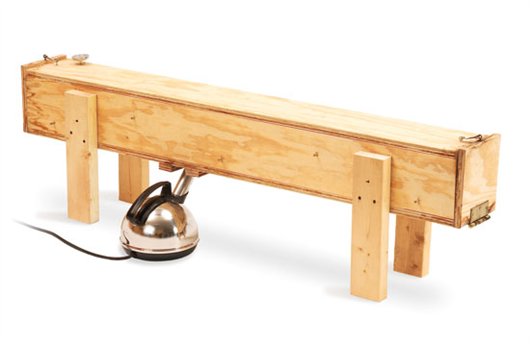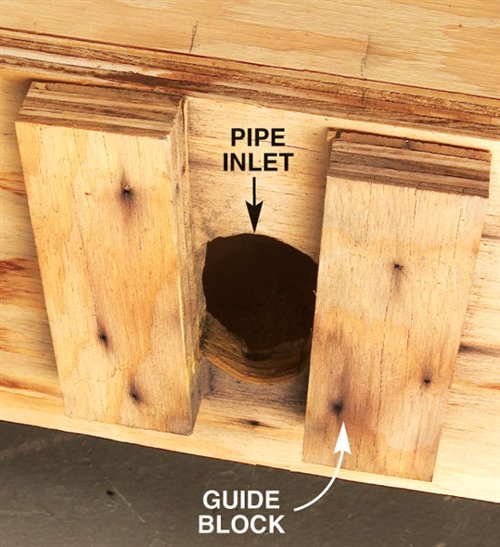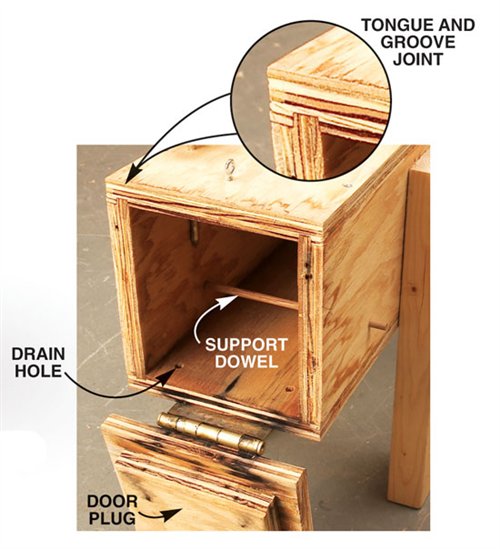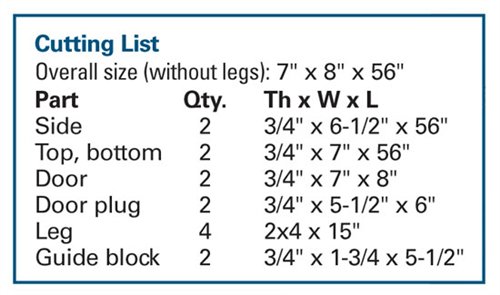We may receive a commission when you use our affiliate links. However, this does not impact our recommendations.
Simple Steam Box
Build a box and add a steam kettle: you’re ready to bend wood.
By Seth Keller
| Building a steam box for bending wood only requires exterior-grade plywood, waterproof glue and an electric tea kettle.
I bought my kettle from Lee Valley (see Source, below). It came with an aluminum pipe to direct steam into the box. Any electric kettle with a cylindrical spout for inserting a pipe or attaching a hose will do. Most kettles, such as this one, don’t have a large capacity. You’ll need to refill the kettle three or four times per hour for a box this size.
Tongue and groove joints help seal the box’s sides (photo, below right). Form the tongue by milling a 3/16-in. deep by 3/8-in. wide rabbet along the box’s sides. Use #8 screws, 1-1/2-in. long, and a waterproof glue, such as Titebond III, to assemble the box.
After the glue sets, drill or cut a hole for the kettle’s pipe. The pipe enters at an angle, so make the hole oblong (photo, below left). Attach guide blocks to help direct the pipe into the hole after you refill the kettle. Drill two 1/4 in. holes at one end of the box to allow condensation to drain. Drill more 1/4-in. holes for dowels to support your bending stock. Drill a tight-fitting hole for a meat thermometer near one door. The thermometer isn’t essential, but it allows you to check the box’s temperature. It should remain above 200 degrees throughout the steaming cycle.
Attach 2×4 legs to elevate the box above the kettle. One end should be higher to ensure that condensation flows to the drain holes. To accommodate the Lee Valley kettle, I propped one end of the box on a block 9 in. high and the other end on a block 8-1/2 in. high. Then I attached the legs.
Add two-piece doors to the ends. One piece is a cap; the other is a plug. Steam will cause the plug to swell, so make it 1/8 –in. smaller than the opening. I used large brass hinges to hang the doors. Add screen door hooks to keep the doors shut as you steam away. Steam passes from the kettle to the box through a pipe inserted into the kettle’s spout. The kettle must be refilled now and then during the steaming process; two guide blocks help position the pipe when you re-insert it in the hole. Constructing the box is very easy. Screwed and glued tongue and groove joints keep the box’s seams tight. Support dowels allow steam to circulate around the wood. A plug on the door helps seal the box’s ends. Source(Note: Product availability and costs are subject to change since original publication date.) Lee Valley, leevalley.com, 800-871-8158, Kettle and pipe, #05F14.02. This story originally appeared in American Woodworker July 2007, issue #129. |
Click on any of the images to view a larger version
Cutting List |
Here are some supplies and tools we find essential in our everyday work around the shop. We may receive a commission from sales referred by our links; however, we have carefully selected these products for their usefulness and quality.













